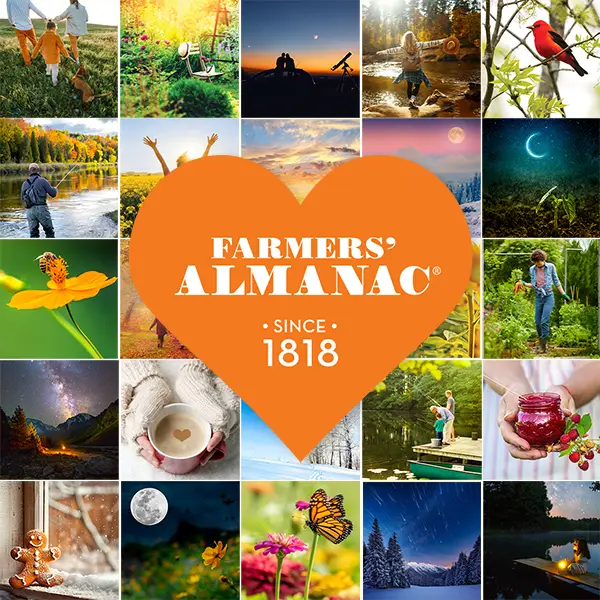A Fond Farewell
The season we hoped would never come is here.

Dear Friends,
It is with a great appreciation and heartfelt emotions that we write to share some sad news. After more than 200 years of sharing a unique blend of weather, wit and wisdom, we’ve made the very difficult decision to write the final chapter of this historical publication. The 2026 Farmers’ Almanac will be our last edition.

Many of you grew up hearing your parents or grandparents quote from the Almanac, always having a copy nearby. Maybe you have planted by our Moon phases, consulted the Almanac for the “Best Days” to potty train, wean, or go fishing. We’re grateful to have been part of your life and trust that you’ll help keep the spirit of the Almanac alive.
We are incredibly proud of the legacy we leave behind and are filled with gratitude. We appreciate and thank our loyal readers, contributors, and partners who have supported us through the years. Though the Almanac will no longer be available in print or online, it lives on within you.
So go ahead—plant your peas when the daffodils bloom. Watch for a red sky at night. Tell the kids how granddad always swore by the Almanac. That’s how our story stays alive.
With deepfelt appreciation,
Sandi Duncan and Peter Geiger
Editor and Editor Emeritus
P.S. The 2026 Farmers’ Almanac is currently sold out in the FA Store, but you may be able to find a copy at your local grocery or bookstore. Beginning December 1, 2025 our website will be restricted to this page. If you are a Member, please check your inbox for more information about your subscription. Questions? Contact [email protected].
This article was published by the Staff at FarmersAlmanac.com. Any questions? Contact us at [email protected].







There must be a way to monetize this website and your content to keep the Almanac running! If no interest perhaps you could sell it to somebody to keep it alive.
Please switch to mostly online if the paper sales aren’t doing good. You can use ad revenue to keep the online pages going “for free” I really hope y’all will figure out a way to keep this going.
So sad 😞. I have enjoyed y’all since I was a child
From a generation of farms and gardeners. I am truly sad.
Heart broken; lost…what will we do without it? I always check it every few days! I live by it. Thank you for putting it out. Would you reconsider keeping it going online?
😭 crushing
Oh crap! I’ve secretly adored having this bit of real magic in my life, and had planned on using it to plan my wedding (if I ever do) to make sure it wasn’t going to be hot or rainy. I wish you’d explain why, or pass on the wisdom of just how you’re able to so consistently forcast so accurately.
Oh no I cant believe Farmers Almanac would ever leave us. I look to it so often, most especially in my email. This is extremely sad.
WHY???
So sad to hear but all good things comes to an end. One thing would be so cool if you guys did a top 100 trends yall gathered since the Almanac started. Hats off and thank you. 🙏🏽 ☺️🥹🫶🏽